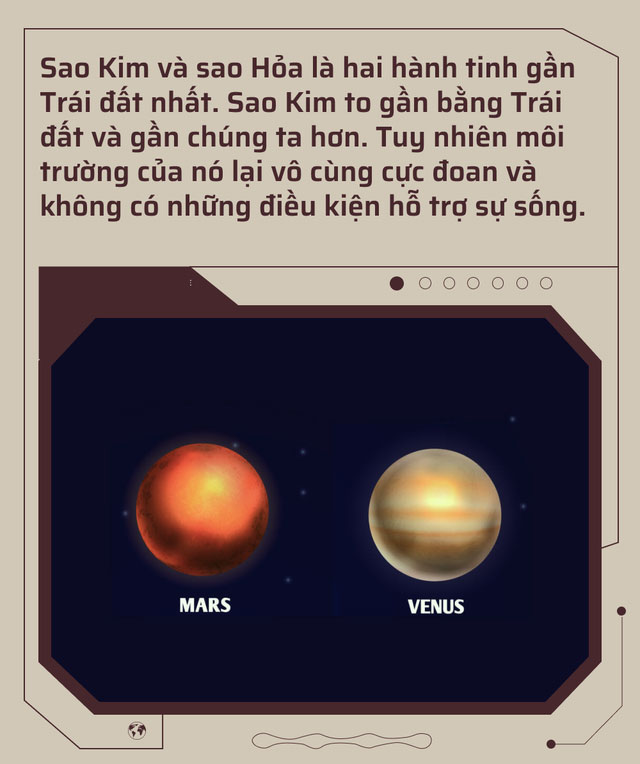Since the conclusion of the United States’ manned lunar missions in the last century, humanity has never truly stepped outside Earth’s atmosphere. Nevertheless, human flights and space exploration have not ceased; unmanned probes have penetrated every corner of the Solar System, providing us with general insights into the conditions of our cosmic neighborhood.
In recent years, the topic of manned space travel to return to the Moon and land on Mars has gradually gained momentum, with plans for colonization on Mars also being included in various agendas.

However, many still wonder: Why should we migrate between the stars? Why is Mars the first stop? We still have plenty of resources and many unutilized, arable areas on Earth.
Even deserts, glaciers, and other barren places on Earth are considered to have far more ideal living conditions than Mars. Investing enormous sums into transforming Earth may sustain many more people. Why are we sending humans to settle on Mars?
These questions often arise in forums and social media pages of science and exploration enthusiasts. Today, let’s delve into this topic and try to clarify it.
Why Should Humanity Migrate to Other Planets?
Human migration to distant planets is not merely for exploration; rather, the profound purpose is to seek a “refuge” for humanity. So, what are we escaping from?
In reality, it is evident that human society is developing rapidly, with people’s awareness advancing thanks to handheld devices, internet access, airplanes, and high-speed rail…
However, when we confront the issues facing humanity, we must consider two points:
- First, our civilized and happy life today is a result of the relentless progress of science and technology.
- Second, the current stable and happy existence is merely a short-term outlook; this life may last through our era and a few generations, but in the long run, it is hard to say.

From the perspective of the relationship between Earth and the Sun, Earth may no longer be a habitable planet in the future. Therefore, how can we continue to live if we do not escape from Earth? How long will this time frame be? It could be very long or very short.
Another reality is the environmental devastation and overexploitation of resources since industrialization, along with greenhouse gas emissions from burning fossil fuels, which have exacerbated Earth’s greenhouse effect—average temperatures have risen by more than 1 degree Celsius since pre-industrial times.
It is believed that if temperatures rise by just 3 degrees Celsius, Earth’s self-regulating climate system will collapse, leading to unavoidable disasters.
This is why scientists have repeatedly issued warnings and conducted studies to alert us that if we do not curb and improve our actions, humanity will face ecological extinction by the end of this century.
Thus, humanity must also prepare for inevitable natural disasters on our planet as well as in outer space, such as severe solar changes and asteroid collisions with Earth, or any events that humanity cannot counter. Currently, the entire population of humanity resides on one planet—Earth; should an extinction disaster occur, humanity could permanently vanish from this universe.

Moreover, the process of migrating to other planets cannot be completed overnight; it can only be achieved through the efforts of several generations, even dozens of generations. Therefore, if we do not start making efforts now, the likelihood of humanity’s extinction will increase. This is the fundamental reason why some visionary scientists, entrepreneurs, and politicians continuously explore outer space and seek colonies for humanity.
Why Choose Mars as the First Stop for Immigrants?
Scientists have explored eight planets in the Solar System, as well as several dwarf planets and moons. When comparing the planets in the Solar System, apart from Earth, Mars is the most suitable planet for human habitation. This does not mean that Mars and Earth’s environments are similar—rather, the environments of the other six planets are far worse than that of Mars.
Mercury is too close to the Sun and has a small mass and volume, making it a barren, rocky planet. Its rotation is locked by the Sun’s tidal forces, with one side always facing the Sun and the other in darkness. Therefore, the environment on this planet is extremely harsh; the temperature on the side facing the Sun can reach 428 degrees Celsius, while the side facing away can plummet to -193 degrees Celsius.

Venus is slightly smaller than Earth, at 88% of Earth’s volume and 81.6% of Earth’s mass. However, Venus’s rotation is unsuitable for human life; its atmosphere is primarily composed of carbon dioxide greenhouse gases, leading to surface temperatures soaring to 500 degrees Celsius, with pressure 90 times that of Earth. Dense sulfuric acid rain is common, and there is no water or oxygen on this planet.
The remaining four planets—Jupiter, Saturn, Uranus, and Neptune—are all gas giants, with Uranus being the smallest at 14.5 times Earth’s mass, and Jupiter being the largest at 318 times Earth’s mass. None of these gas planets have solid surfaces. The highest surface temperature of Jupiter is only -148 degrees Celsius, while Neptune’s lowest can drop to -200 degrees Celsius. Thus, they are completely unsuitable for human settlement.
In comparison to these six planets, the environment of Mars is much more temperate. Although Mars’s atmosphere is thinner than Earth’s, it still exists; despite harsh temperatures, they are still bearable; while there is no liquid water, frozen water is quite abundant underground and at the poles; the rotation period is 24 hours, 37 minutes, and 22.7 seconds, similar to Earth’s rotation cycle; the orbital period is 686.971 days, nearly equal to 2 Earth years; more importantly, due to its axial tilt of 25.19 degrees, which closely resembles Earth’s 23.26 degrees, the equator forms tropics where the Sun shines directly, resulting in distinct seasonal changes throughout the year.

Thus, it can be seen that except for Earth and Mars, the environments of the other six planets can be compared to hell.
Some people argue that certain moons in the Solar System may also have conditions suitable for human migration, such as Titan. However, further exploration and research reveal that its atmosphere is composed of 98.66% nitrogen, with surface temperatures at -179.15 degrees Celsius, no water, and lakes and seas made of liquid methane hydroxyl, making it unsuitable for human habitation.
Of course, the Moon could also become a human settlement in the future, but it is too small and too close to Earth, making it difficult to escape the disasters that Earth may encounter, thus failing to achieve the intended effect of “putting all eggs in two baskets.”
Mars also has a very unique condition; apart from the Moon and Venus, it is the closest planet to Earth, at approximately 57 million kilometers away at its nearest point. With current human spaceflight capabilities, reaching Mars is already the limit of our abilities.
Beyond the Solar System, There Are Suitable Planets, but They Are Currently Out of Humanity’s Reach
Our farthest unmanned probe, Voyager 1, has been flying for over 40 years and has traveled more than 23 billion kilometers. It has now exited the Solar System at a speed of about 17 km/s. However, it will still take over 17,000 years to escape the gravitational radius of one light year (9.47 trillion kilometers) of the Solar System.
Therefore, for humanity to travel beyond the Solar System at this moment seems to be a fantasy. But as long as humanity does not go extinct, we will eventually exit the Solar System and venture into the vast depths of space. This is because the Sun will also be destroyed in about 5 billion years (or perhaps sooner), at which point the Solar System will be an inhospitable place for living organisms.

Currently, despite humanity having discovered thousands of exoplanets (planets outside the Solar System), dozens of terrestrial planets located in habitable zones that may have liquid water suitable for human life, we can only gaze at them from afar. Because of these factors, Mars has become the top choice for human colonization.



















































